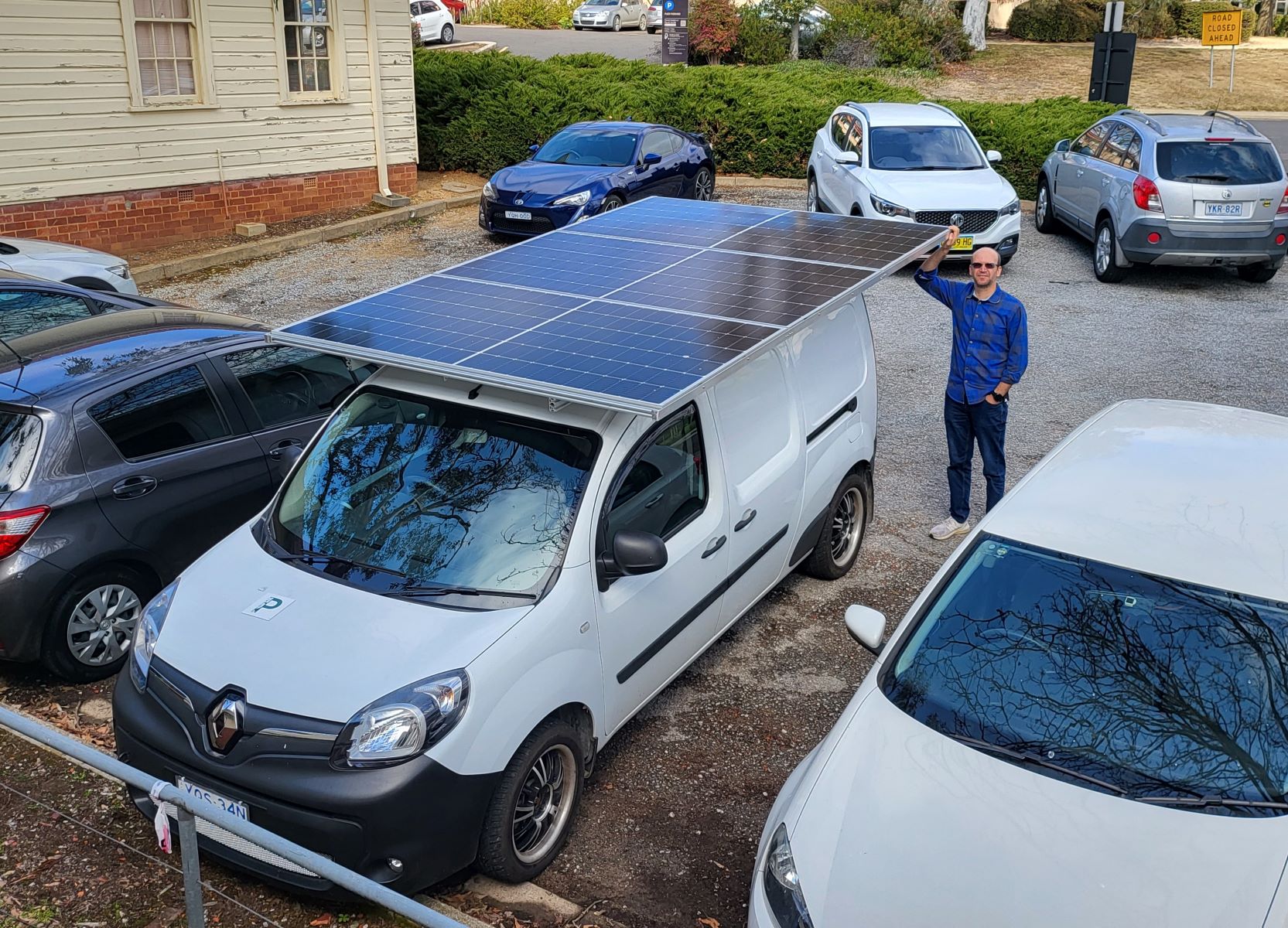A solar car you could take to Mars

Living on Mars you’re a good distance from a mechanic. So, any technology you use there would need to be robust.
These are the kind of thoughts Professor Rod Boswell has been mulling over as he considers the plans of humans to venture to other worlds (e.g. NASA's Moon to Mars Project)
Transport is an important facet of colonisation, so the recent boom in electric vehicles and improvements in solar panels prompted Professor Boswell and colleague Dr Mahdi Davoodianidalik, both from the Nuclear Physics and Accelerator Applications Department, to put the two together to make a self-contained vehicle.
It sounds simple, bolting solar panels on to the roof racks of an electric vehicle and plugging them in. But the devil is in the details, says Professor Boswell.
“Things never work first pop; it’s taken about year to get it working,” he says.
To get energy from the array of three latest-generation 510-watt PV panels into the EV, a Renault Kangoo ZE, a light commercial van, requires an auxiliary 320 amp/hour lithium battery, that is mounted neatly in the rear of the van.
Once charged up, the auxiliary battery can charge the main drive battery through a standard inverter/charger. Keeping the systems separate has meant Rod’s team haven’t needed to make any modifications to the vehicle drivetrain, which might impact its Australian road-worthy certification.
The result is a system that will add about 9 kWh per day in the sun to the Kangoo’s battery, translating to about 50 km of range. It would take four to five days to fully charge it.
From here, he’s planning to commercialise the technology, and possibly develop a portable system to go in the boot and get you out of trouble if you run short of charge on long journey.
“I’m considering giving courses on this: not many people know exactly how all these components – solar cells, chargers, inverters - work in depth,” Professor Boswell says.
This article was first published by the ANU Research School of Physics and was written with collaboration from Jerry Cashman, ICEDS



